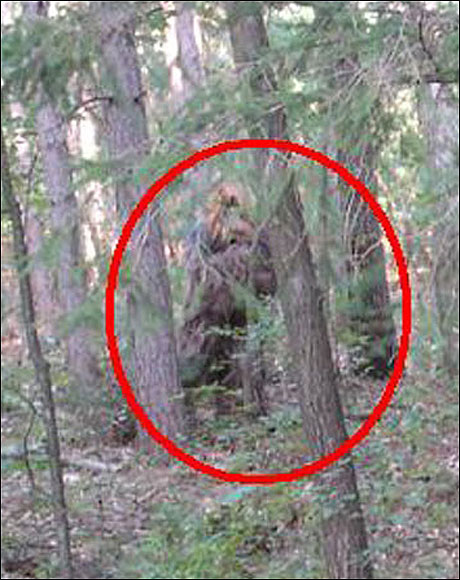Zeno was a Greek philosopher who has famously vexed great minds for thousands of years with his puzzling paradoxes that seem to defy explanation or refutation. The problems he describes are typically simple to state, and to understand, but defiantly difficult to deconstruct or disprove. Aristotle, Bertrand Russell, St. Thomas Aquinas, and scores of other heavy-weight philosophers have chimed in with suggested solutions to at least some of Zeno's riddles. I've looked at a lot of these counterarguments, solutions, and refutations to Zeno's Paradoxes, but I've never seen one particular counterargument that seems the most obvious to me.
Thoughts on Science and Pseudoscience
Blinding people with science, reason, and skeptical inquiry.
"Some say they see poetry in my paintings; I see only science." -Georges Seurat
Thursday, July 31, 2014
Monday, June 24, 2013
A Human Brain is Now Mapped in 3D at the Cellular Level
Something amazing happened this month, something monumental. For the first time ever, a human brain has been scanned and computationally reconstructed as a virtual 3D model, with detail down to the cellular level. The work was reported in the flagship journal Science. This is monumental because it is the most detailed map of the human brain ever before captured, and should allow incredible advances in understanding how the brain's circuitry, structure, and connectivity gives rise to the mind, consciousness, behaviors, and mental illnesses.
Monday, June 17, 2013
Visual Hallucinations in Photographs
A neurological case study was recently reported on visual hallucinations in photographs. I found this particularly fascinating. Two Parkinson's patients with severe visual hallucinations and delusions were shown photographic evidence proving that what they were seeing wasn't actually there. Strangely enough, the patients' hallucinations extended into the photographic realm, and they reported seeing the hallucinations there, too. Utterly bizarre.
Tuesday, May 14, 2013
Why saying "Newton was Wrong!" is a Poor Argument
I've been seeing a lot of pseudoscientific rants lately that sound a lot like this: "Well, your fancy so-called scientific theories could be all wrong. Newton had the final word in physics, until Einstein came along, and then WHAMMO he re-wrote the laws of physics!!". This is a poor argument with several layers of problems.
A Few Popular Psychology Myths Debunked
This post tackles a few common misunderstandings and incorrect memes about brains, intelligence, and psychology that are floating around the internet and elsewhere. For these two, it's not even clear how these silly ideas got started. But understanding why they are wrong (or meaningless) is instructive and interesting.
Monday, March 25, 2013
Bigfoot Footprints: The Problem of the Distribution Shape
A scientific study on Bigfoot footprints and other such data was published in the late 1990's:
Fahrenbach, W. H. (1997/1998). "Sasquatch: Size, Scaling, & Statistics," Cryptozoology, 13, pp. 47-75).
This work admirably attempted to tabulate and present 40 years worth of Bigfoot evidence data. I won't even get into the issue of what the researcher is counting as "good" or "acceptable" data to include in this collection of samples. Instead I want to focus here on the footprint data, because it appears to create an especially problematic issue for Bigfoot believers.
Fahrenbach, W. H. (1997/1998). "Sasquatch: Size, Scaling, & Statistics," Cryptozoology, 13, pp. 47-75).
This work admirably attempted to tabulate and present 40 years worth of Bigfoot evidence data. I won't even get into the issue of what the researcher is counting as "good" or "acceptable" data to include in this collection of samples. Instead I want to focus here on the footprint data, because it appears to create an especially problematic issue for Bigfoot believers.
Tuesday, March 5, 2013
Time.com Article on Computer Learning Widely Misses the Mark
A recent article published in the science and technology section of Time.com makes some truly spectacular errors and misunderstandings about artificial intelligence and computer learning. And I thought it would be instructive for people who are interested in these topics to consider why this article is inaccurate, and where and how it misses the mark so badly. The author starts out by claiming that computers are extra stupid:
Just how stupid is your computer? The short answer is that it's really, really stupid. The longer answer is that it's stupider than a slime mold.
Thursday, January 17, 2013
Is There Alien Life in the Universe? Probably, But Not What You Think
There are billions or even trillions of stars in every galaxy, and there are billions of galaxies in the universe. Around many of these stars are probably planets, with many of these planets being Earth-like in regards to size and distance from the parent star. Surely, then, given the sheer magnitude of the numbers, there must be alien life out there somewhere, right? Yes, there probably is alien life, but it's probably not what you are thinking. Alien life, if it exists, is almost certainly stupid goo.
Saturday, December 29, 2012
The Fine-Tuning of the Universe (the "Goldilocks Enigma") and Why It's Wrong
Thursday, December 20, 2012
Skepticism is Not the Same Thing as Science: An Eye Towards the Global Warming "Debate"
Skeptics primarily use logic, reason, and critical thinking in order to make sense of the world. Skepticism is a very important quality to have for professional scientists (and, I would argue, for just about everyone). But being skeptical is not equivalent to being scientific, although the two usually make for good traveling companions. Science goes one step further than mere skepticism by giving the final word to data, to empirical evidence extracted from cleverly designed experiments, to proof. Evidence is the ultimate decider in any debate, scientific or otherwise. Period.
Telling Truth from Nonsense: "But what about" versus "If...then" Thinking
Conspiracy theorists, pseudoscience proponents, and various peddlers of nonsense can often be spotted by how they argue. An insightful method I've seen recently for spotting low-quality arguments (otherwise known as "B.S.") is figuring out whether an argument falls into one of these two types: "But what about" versus "If...then" reasoning.
The Best Quotes of All Time, on Science and Life
I've been collecting my favorite science-related quotes for quite some time, and have decided to share, mainly because I want to see which ones I am missing. So head on down to the comments section and add your own....
Wednesday, December 12, 2012
Where Are All the Bigfoot Roadkills? An Updated Analysis Using Mammal Roadkill Data
In a previous analysis of Bigfoot population estimates by the Bigfoot Field Researchers Organization (BFRO), I used human pedestrian car accident data to predict how many "Bigfoot roadkills" we might have expected to find over the last 60 years, if the BFRO estimates are accurate. I was able to conclude that at least dozens (or perhaps hundreds) of Bigfoots should have been hit and/or killed by cars by now, if indeed they do exist. However, there are several potentially valid criticisms that could make the use of human data for that comparison questionable: (1) humans are more often struck in urban or suburban areas, whereas Bigfoots supposedly live primarily in rural areas; (2) a disproportionate number of pedestrian accidents involve alcohol, either relating to drunk drivers or inebriated pedestrians, which probably doesn't really apply to Bigfoot vehicle strikes.
To alleviate these concerns, and to show that my human-based estimates were still extremely conservative and the conclusions valid, in this post I re-analyzed the Bigfoot population estimates using comparably-sized mammals' vehicle strike data, and have found even more compelling evidence that Bigfoot doesn't exist...
Wednesday, December 5, 2012
Why Eye Witness Accounts Are Not Good Scientific Evidence
 People think that because there are thousands of eye witness reports of Bigfoot sightings (or UFO's, or angels, or Loch Ness monsters, or unicorns, or whatever) there must be some truth to the matter. They admirably want to remain open-minded about things. Surely all those eye witnesses can't be wrong, right?
People think that because there are thousands of eye witness reports of Bigfoot sightings (or UFO's, or angels, or Loch Ness monsters, or unicorns, or whatever) there must be some truth to the matter. They admirably want to remain open-minded about things. Surely all those eye witnesses can't be wrong, right?Tuesday, December 4, 2012
Are You Open-Minded or Are Your Brains Just Falling Out? A Simple Test

Why Bigfoot Population Estimates are Problematic
The Bigfoot Field Researchers' Organization (BFRO) claims that the population of Bigfoot (sasquatches) in North America is approximately somewhere between 2,000 and 6,000 creatures. How this estimate was exactly calculated is not discussed, although the primary contributing factor appears to be the Observability Ratio. Relying on this tool for their calculation is a serious problem.
Friday, November 23, 2012
Does Bigfoot Exist? Further Statistical Analysis

In a previous post, I used human pedestrian car accident data and animal roadkill data to show that Bigfoot could not possibly exist in the numbers estimated by the Bigfoot Field Researchers Organization (BFRO), making it extremely unlikely the mythical creatures exist at all. In this post I provide further statistical analysis to support this claim.
For this analysis, let's look at human hunting accident data and apply it to the hypothetical Bigfoot population estimates given by the BFRO. The thinking here is to take hunting accident rates from a comparable population (human primates wandering around the woods in hunting areas), and apply it to our hypothesized primate population (Bigfoots) that are also supposedly wandering around these same areas. This will allow us to predict how many Bigfoots should have been accidentally shot and/or killed over the last several decades, if indeed they do exist.
Monday, November 19, 2012
Does Bigfoot Exist? Statistical Evidence Clearly Says No
Most people, including scientists, think that pseudo-scientific claims are essentially unfalsifiable, since a skeptic can't typically provide direct physical evidence proving the non-existence of something. But, luckily, pseudo-science proponents sometimes make scientifically testable or falsifiable claims, or at least making claims we can analyze with some serious scientific confidence. Here's an example involving 'squatches that I noticed while watching Animal Planet's Finding Bigfoot television series.
Bigfoot ("sasquatch") believers have estimated that there are between 2,000 and 6,000 bigfoots in North America. Surely, a hairy lumbering 7 to 9-foot-tall giant primate living in modern North America, snooping around at all hours of the day and night in both rural and suburban areas, would have been struck by a motor vehicle by now, right? Not so, according to the Bigfoot Field Researchers Organization (BFRO) FAQ, which claims that this painful lack of evidence is explained away by simply saying "Around humans their typical behavior is to flee or hide. They try to stay out of view or at least in the shadows when near people or moving vehicles." But that behavior describes many, many species of real animals that actually exist and nonetheless end up as highway spaghetti. If bigfoots really exist, where are all the bigfoot roadkills? Let's find out...
Subscribe to:
Posts (Atom)












